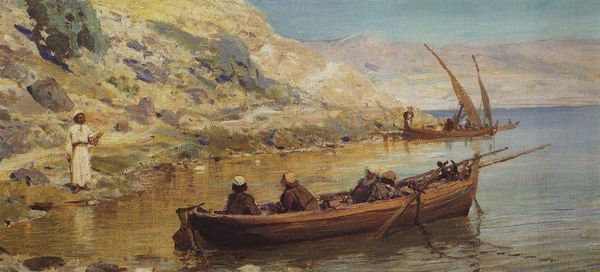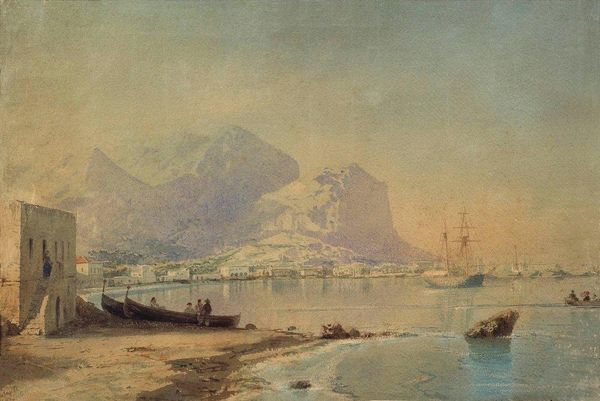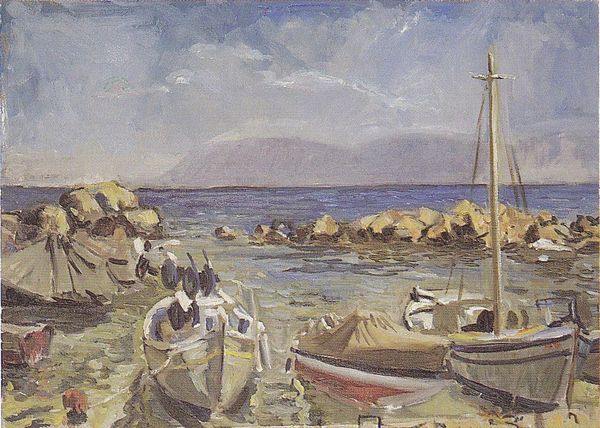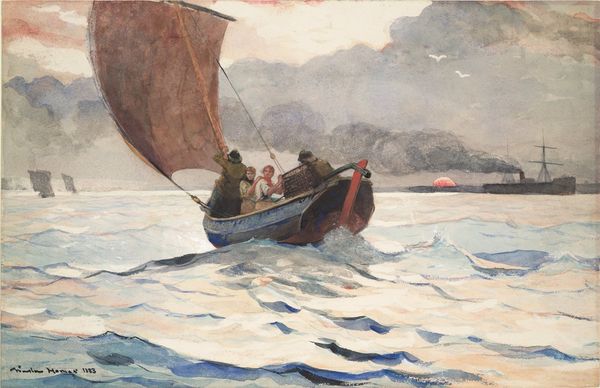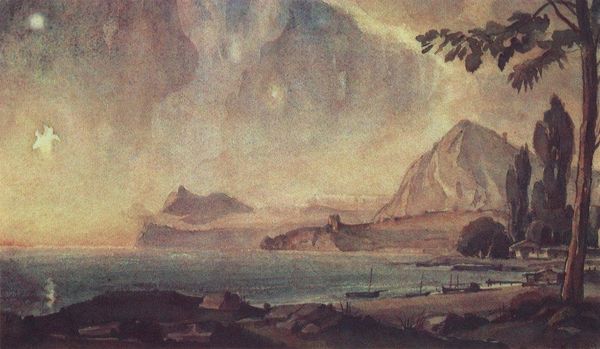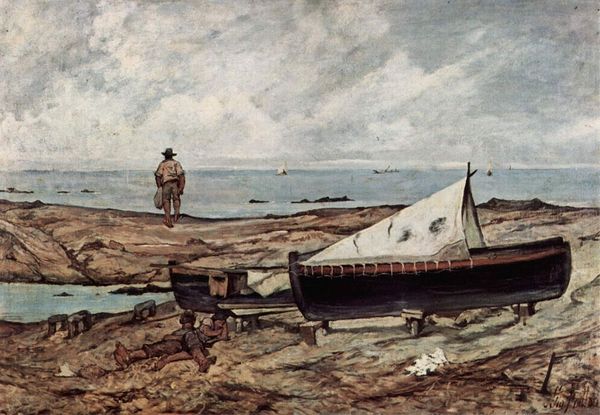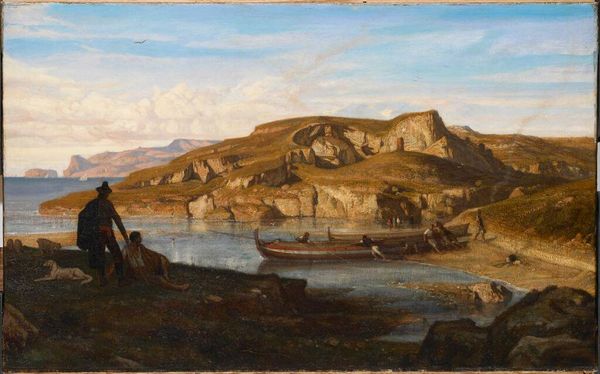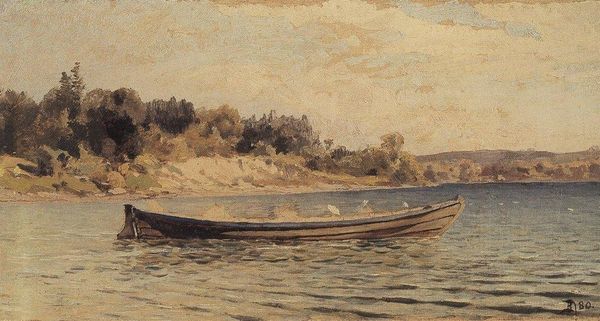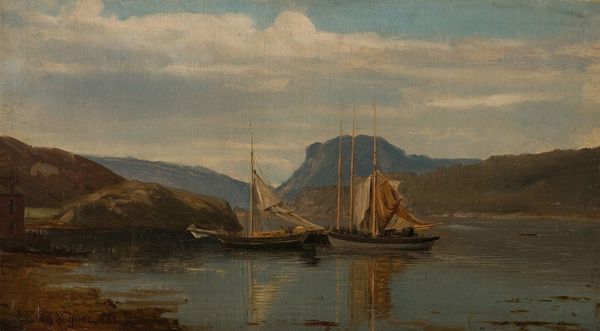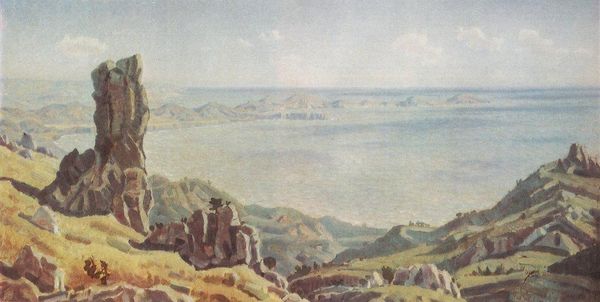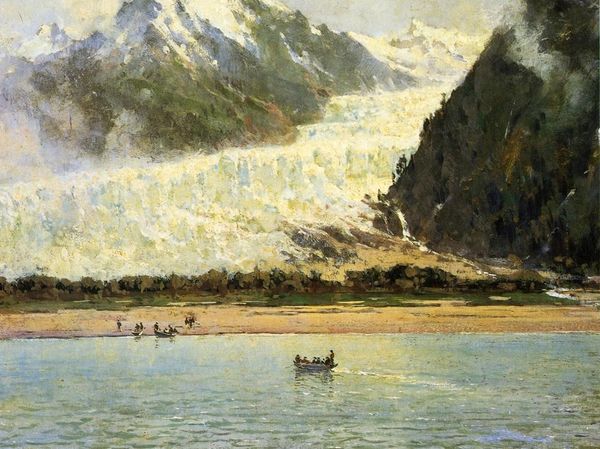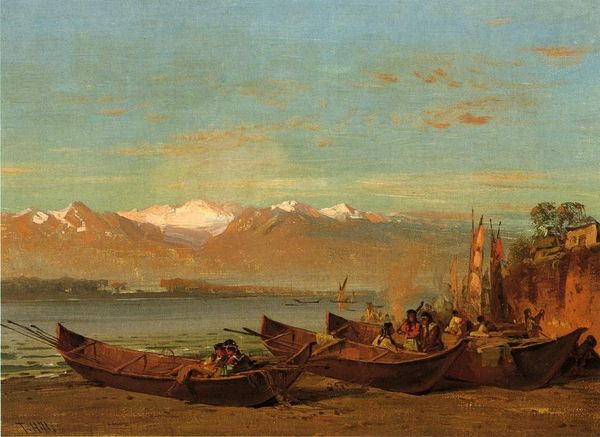
Copyright: Public domain
Editor: This watercolor, “John and James” by Vasily Polenov, painted in 1905, depicts figures in small boats on what appears to be a sunny day on the sea. It feels peaceful, almost idyllic, but I'm curious how you interpret this work. Curator: Idyllic on the surface, perhaps. But let’s delve into the historical context. Polenov painted this in 1905. What else was happening then in Russia? Revolution. Uprising. Social upheaval. The idyllic is always political. Is Polenov using this seemingly peaceful scene to comment on social stability or, conversely, is it an escapist fantasy in the face of societal collapse? Editor: So, the painting is maybe in conversation with the political situation? Curator: Absolutely. And consider the subjects: "John and James" – biblical names, connected to fishing, to labor. Who are these people, really? Are they merely figures in a landscape, or do they represent the working class, the oppressed, struggling to stay afloat amidst political turbulence? Also, how might Polenov’s choice of watercolor, a medium often associated with the ephemeral and the domestic, intersect with ideas about fragility, gender, and power? Editor: I hadn't considered that! Seeing it as social commentary through the lens of the biblical and through material choices definitely enriches my understanding. Curator: Exactly! Art is never created in a vacuum. It is always in conversation with its time, its society, its politics, and, importantly, with art history. Editor: I'll remember that. Thank you, I’m seeing much more depth here than I did at first glance.
Comments
No comments
Be the first to comment and join the conversation on the ultimate creative platform.
